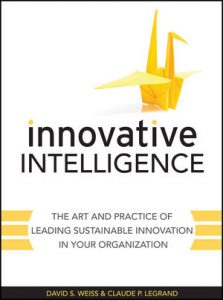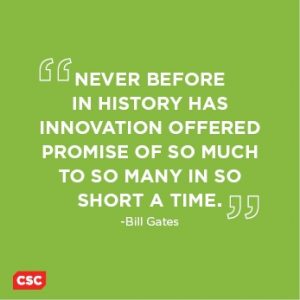How Might We…make innovation a routine in our school, for our student and for our faculty? This is a question that I’ve tried to tackle in my work with The Teacher’s Guild. And it is a burning question that this book picks up on in a very concrete way.
 You would read this book to:
You would read this book to:
1) Establish and curate a shared language around innovation in your organization
2) Help understand the role of the leader in an innovation culture (hint: it is NOT having to be the most innovative thinker)
3) Generate ideas to create and maintain a culture of innovation within your school
4) Support the implementation and deliberate cultivation of innovation intelligence in yourself, your leadership team, your faculty and students
Innovation is a term that is used throughout education circles, and business circles, and in this book the authors tackle the HOW of innovation. From my work with Grant Lichtman, I like to go back to his concept of innovation:
Innovation is the development of new ideas that add value to the organization
In this book, the authors define innovative thinking as:
…the process of solving problems by discovering, combining, and arranging insights, ideas and methods in a new way (7)
The idea of ‘adding value’ is implied here, in that there is legitimate problem solving involved; however, the book makes a distinction between “creative thinking” and “innovative thinking” in that creative thinking as no boundaries, directives or limitations. Whereas innovative thinking has all of the above to support an effective, realistic solution. This is one thing that I enjoyed about this book:
This book does not languish in the joys and vagueness of what innovation can be; rather, it provides concrete structures, definitions and programs that can result in shifting towards an innovative culture.
A strong message that emerges from this book is that innovative intelligence can be nurtured and cultivated in an organization. It focuses on the role of the leaders as someone who architects moments, teams, initiatives that foster innovative intelligence. It is the leader that must support the innovative intelligence in others. For example, when talking about leading innovative, intact working teams, the authors recommend the leader to: Leverage the added value of teams in general, to encourage and model the use of innovative thinking, to understand when to focus on innovative thinking and when to focus on stability, and to ensure that the leaders at all levels are ready for innovation. (189) Strong suggestions around curating the understanding, and appropriateness of innovation before jumping into “think of something innovative!”
This book also delineates between complex and complicated challenges. Complicated challenges are those that are multi-faceted, repeatable problems that need to be simplified and organized. However, where innovative thinking comes in is with complex challenges: “Ambiguous and somewhat unique problems and stakeholder relations that need to be understood.” (21) It is in our ability to make complex the key issues discussed in previous blogs that we can then tackle with innovative thinking.
Throughout the book, the authors suggest an innovation plan, a system of thinking, and offer some excellent resources. However, through our work here at Cohort 21, I believe that design thinking is the solution that this book is asking for. Design thinking supports different perspectives, it offers the necessary boundaries and focus.
If we can problematize, and make complex the key challenges in education, it will be the application of design thinking at the faculty level, the student level, and the administration level, that can yield innovative thinking and potential solutions.
This book is a great read for those looking to take that next step and implement support systems, establish shared language and vision around what innovation is, and to get practical advice on where to start.

Garth,
Thanks for sharing. I love the distinction between creative thinking and innovative thinking. Developing a taxonomy and shared language for innovation in schools is a big part of bringing teams together to create a vision for the future. I might have to borrow this book from you!
Les
How are you, at FDS, making this distinction between creative and innovative thinking? Or do you find that you need to? Part of the fun part is that zany piece of thinking in diverse ways – indeed even exploring bad ideas to get to the good – that leads to novel ideas and new perspectives…